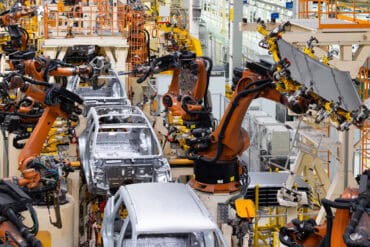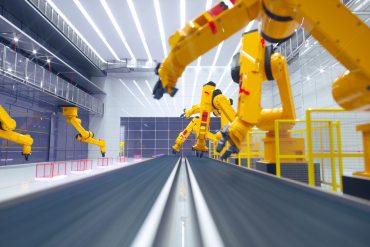
Many technologies, including digital twins, virtualization, and more, can help auto manufacturers transition to EVs and meet changing EV production requirements.
Many manufacturers of internal combustion engine (ICE) vehicles must re-work their end-to-end operations from design to development to production to support market demands for electric vehicles (EVs). Technology can play a critical role in that transformation.
Obviously, manufacturers are not going to instantly switch from ICEs to EVs. And as such, they will have to manage a larger product portfolio and the associated supply chains. So, in addition to their normal changes to support new ICE models and features, at the same time they must bring new battery electric, hybrid electric, and plug-in hybrid vehicles to market.
That scenario means normal auto manufacturing challenges are compounded, especially since electric vehicles are evolving continuously as users expect and demand the manufacturers to embrace new technology as it comes along.
A long-standing problem, but now on steroids
Ever since cars were on the market, automotive manufacturers and their tier 1 OEMs have had to change designs, supply chain elements, embedded technologies, production processes, and more. Those changes are more frequent and more rapid with EVs.
So, how can automakers address the issue of bringing EVs to market while continuing their work on new ICEs? Increasingly, the industry is getting back to its foundations. To that point, automakers have long been proponents and practitioners of lean manufacturing. Many of the strategies and principles of lean today to today’s mixed ICE/EV development, design, and production world.
Essentially, concepts that were introduced nearly a century ago apply today. To understand why lean is required, one only needs to look at some of the comments of its early proponents. One specific example that is often cited comes from Dr. Jeffrey Liker in his book “The Toyota Way.” Liker noted, “When lead-time is short, focus on keeping the production line flexible, not only to achieve customer responsiveness but also higher quality, better productivity, and utilization of equipment and space.”
That book was first published 20 years ago, yet its message remains true for today’s market. The question then becomes, how does a manufacturer keep their production lines flexible and their offerings in line with customer demands?
Increasingly, what’s needed is an infusion and adoption of modern smart manufacturing technology and best practices. As such, the industry is seeing increased use of digital twins, advanced supply chain management, and virtual prototyping of production processes, cells, and lines.
Encouraging the transformation
Recognizing the importance of the EV market to manufacturers and the general economy, the U.S. government, through the Department of Energy (DOE), announced the Domestic Manufacturing Auto Conversion Grants program last month. The program offers $1.7 billion in funding to support the conversion of 11 shuttered or at-risk auto manufacturing and assembly plants to produce and supply electric vehicles.
In announcing the funding, U.S. Secretary of Energy Jennifer M. Granholm noted the funding served multiple purposes. “There is nothing harder to a manufacturing community than to lose jobs to foreign competition and a changing industry,” said Secretary Granholm in a press release announcing the program. “These grants ensure that our automotive industry stays competitive.” Additionally, the program also supports the Administration’s efforts to strengthen domestic supply chains and bolster America’s manufacturing segment.
The need for a technological assist
Many technologies, including digital twins, virtualization, and more, can help auto manufacturers transition to EVs and meet changing EV market conditions.
For example, Digital modeling and digital twins can be used to design new models or versions of existing EVs. The same models and virtual representations might then be used to optimize EV auto designs for performance, efficiency, and cost.
Once a design is finalized, virtual commissioning can be used to retrofit and update factories to accommodate EV production lines. Or the technology can be used to design and build new facilities altogether.
The shift towards virtual development brings advantages, enhancing efficiency, reducing costs, and aligning with market demands. As a result, automakers are adopting comprehensive end-to-end virtual prototyping, encompassing design, engineering, manufacturing, assembly, and testing within virtual environments.
Moreover, digital twins and virtual prototyping are critical in shortening the design-to-production transition, a crucial factor in the fast-changing EV market where time-to-market strongly influences competitiveness.







